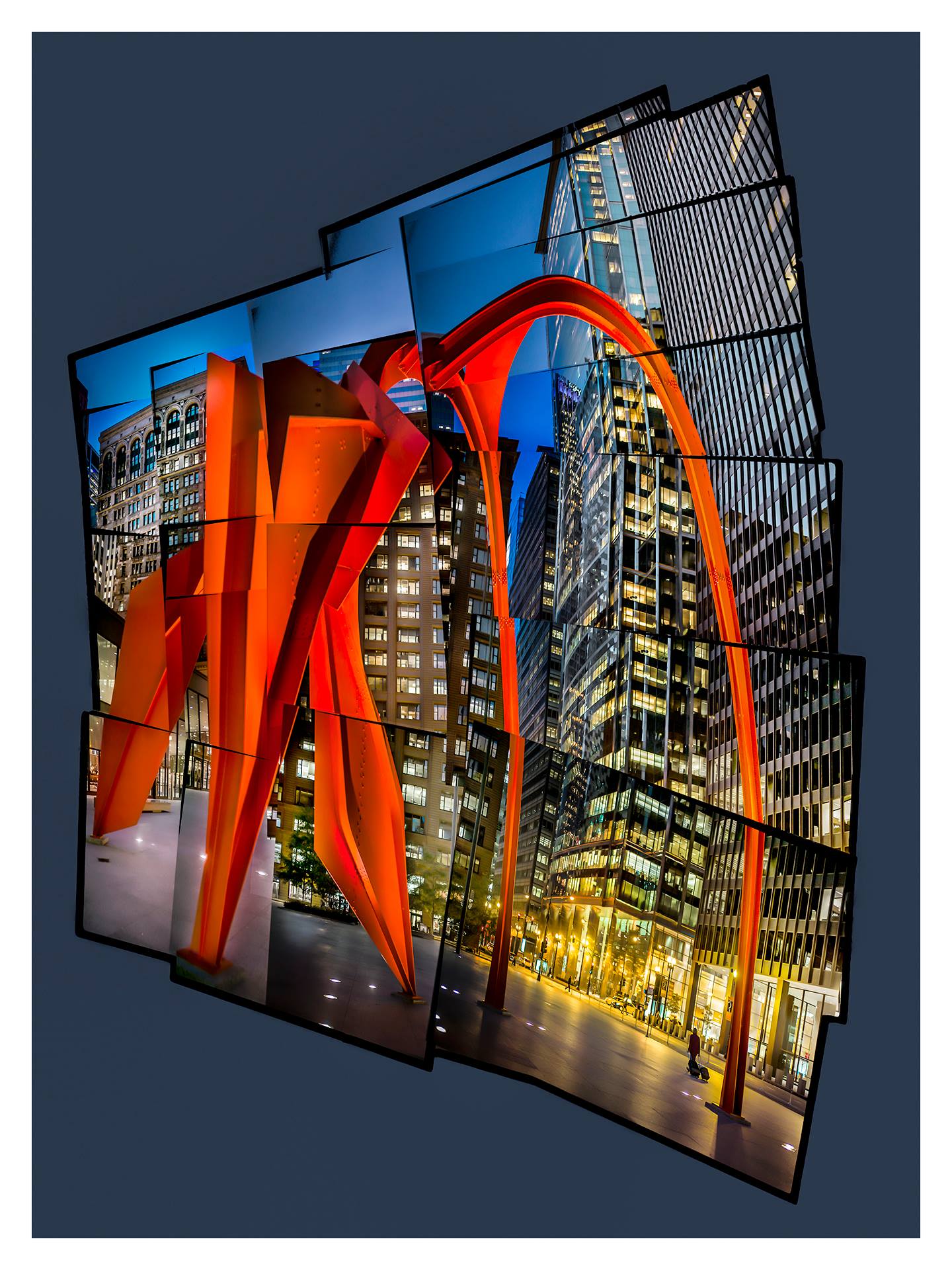(Making a case for photo cubism aka joiners)
Many times I witnessed photographers vehemently objecting to images like David Hockney’s famous
“Pearlblossom HWY”, California

Just to show how far such objections go, recently a portrait photography group on FB, a group with many professional photographers contributing, took down this portrait with no explanation offered.
Tobias, Chicago 2013

It just so happened that before taking it down I managed to read a fair number of comments. Those critical held a strong belief that only a ‘straight out of camera’ image, is an honest reflection of how we see. They argued that our eye is in essence a camera with lens, pupil and retina functioning as lens, shutter and film. Many suggested that it doesn’t even belong in the photography category anymore. Clearly the sentiment for a central perspective runs deep and strong. I won’t argue the categorization of such an image, but I will argue that the straight out of camera image with its single view point and central perspective, has little to do with how we actually see.
The first fallacy is that reasoning limited to the anatomical analogy, the eye is a camera, completely neglects the grey matter behind the eye where images are formed. As an example let me use one of sports most iconic images, Neil Leifer’s photo
Muhammed Ali vs Sonny Liston, Maine 1965

All those who argue that the eye is a camera take this image as a true reflection of what the photographer saw. However when we scan the image we detect a multitude of details that we cannot possibly process in a 60th of a second, but the camera does. The human mind requires time to take in all details, first the imposing position of Ali, then Liston floored, afterwards the photographers behind the ring, later the audience fading into the dark, eventually the eye returns to the center and recognizes the closing of the boxers, the expression on Ali’s face, etc. All this takes time, but by then Ali will have moved, his expression will have changed, the reporters will have moved, even worse if we stood in the photographers spot we might move our head to take in more peripheral details, or in the excitement of the moment we get up from the seat and change our perspective etc.
Clearly a camera performs a freezing act that we humans are completely incapable off, simply put we do not see like a camera, yet many insist this is the way we see. The mechanics of time and motion aside we are extremely selective in our focus often given much greater attention to some areas, the ones our mind deems important, and in some cases completely neglecting other areas. In the image above our eye will be directed to spend a lot of time to explore details that make up the central part of the image, Ali towering over Liston. But did you notice the two ropes of the ring are purple? I lied, there are three ropes, did you notice that? For me it is clear that the process of seeing is very much driven by the grey matter behind the optics and far from photography in the traditional sense.
I hope the above example is sufficient to justify a different approach and explains why I love David Hockney’s joiners. It is a thoughtful and creative attempt to approach the issue of seeing using a camera. So when I went around the corner to take an environmental portrait of a barista in my NYC neighbourhood I wanted to give it a try. Naturally in an environmental portrait I want to show the person and I want to emphasize the parts that are relevant to the job of the barista, the counter, the coffee machine, the bottles behind… To see the counter, the kitchen sink, I have to look from above, to see the barista I have to look straight at him, therefore different perspectives had to be merged into one image. This explains why I used Hockney’s idea of joiners.
Barista II, New York 2018

Additionally I moved from left to right, so that the table and in fact the entire scene shows no perspective distortion such as elements further away getting smaller. This of course kills any central perspective. Again when I sit there taking in the scene with my eyes this is what I see, a table that is equally wide no matter the distance to my eye.
If I were to do the same joiner not moving parallel to the table the result would show significant distortion to left and right end, much like wide angle.
Barista I, New York 1985

This distortion generates the illusion of a much larger space, when in fact the room is very cramped. Hence the first version is much closer to how I perceive the space.
For now I believe that we have been conditioned to accept that the camera image is the way we see, when in fact it is not. But if you break with that approach you go against convention, and you challenge the viewer. We all know that such challenges can lead to very different receptions.
In conclusion a few more joiners of mine:







Leave a comment